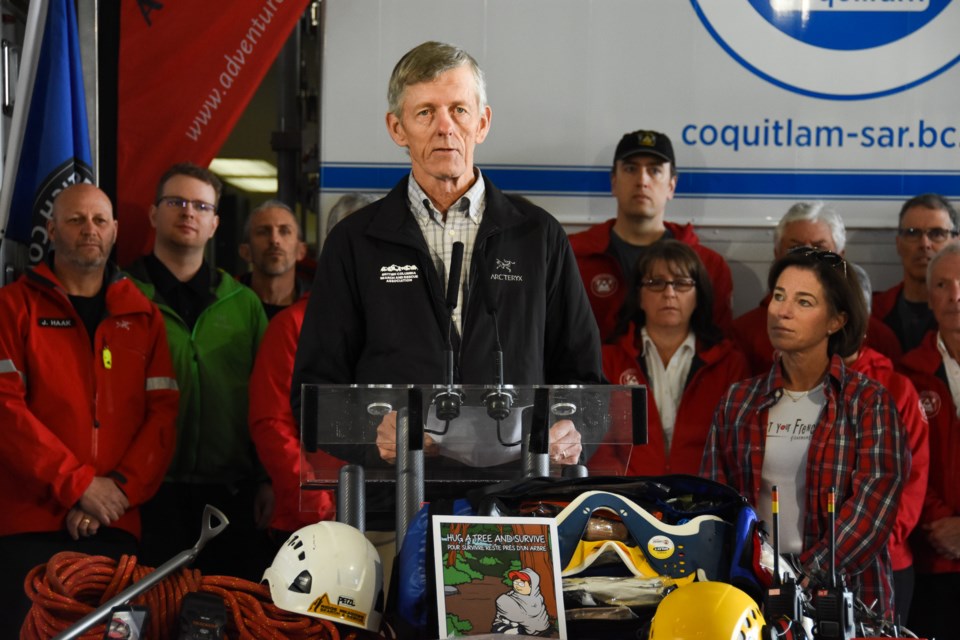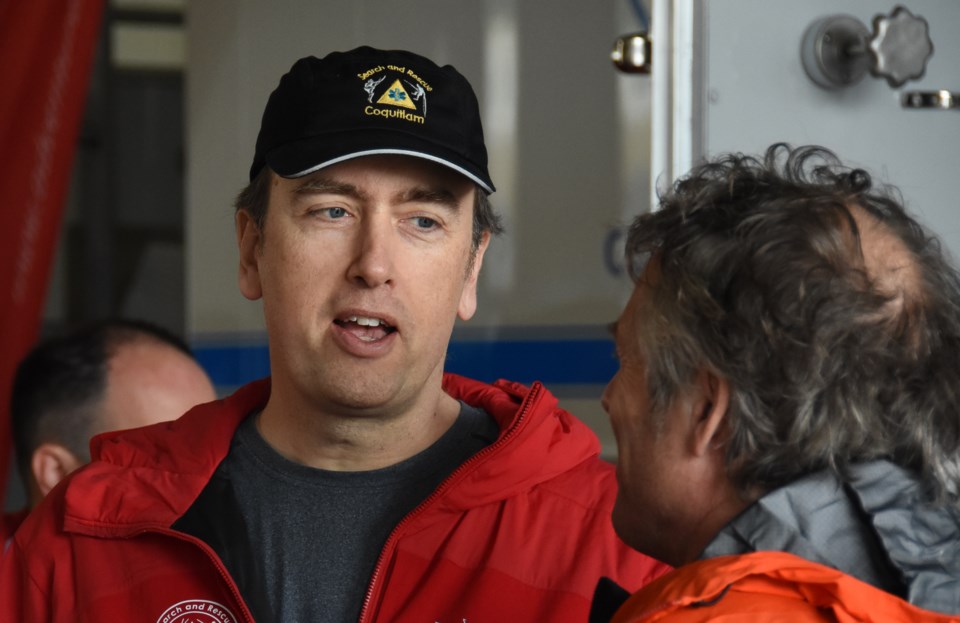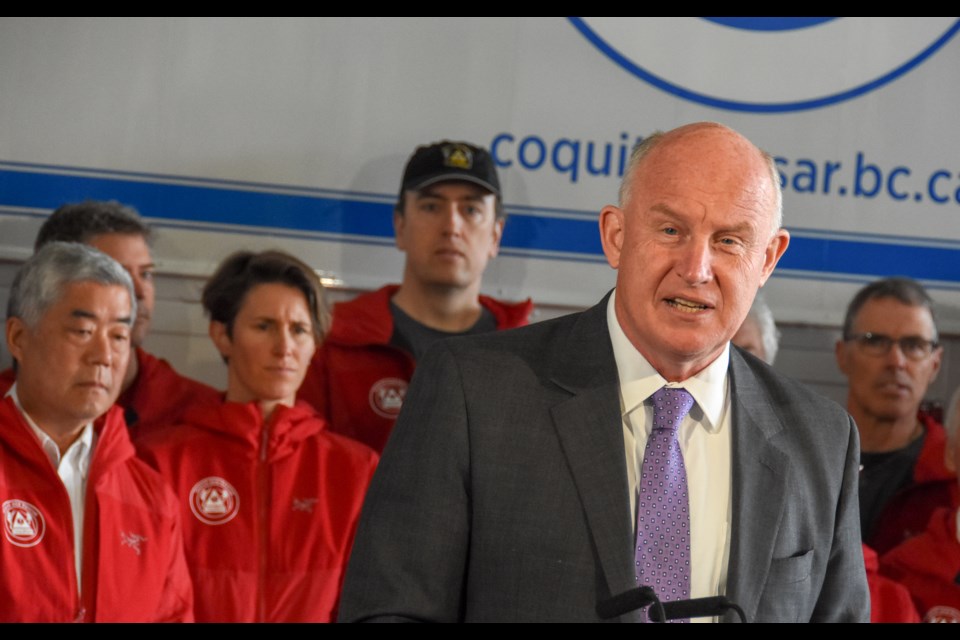The provincial government announced $18.6 million in new funding Saturday to help B.C. search and rescue teams train, buy and service equipment, and hire new staff.
The March 23 announcement comes scarcely a week before a $15 million alternative funding model put in place by the Liberal government in 2015 was scheduled to run out.
This time around, the NDP government will follow the same funding model the BC Search and Rescue Association (BCSARA) recommended to the Liberal government in 2013.
Speaking before the crowd gathered at Coquitlam Fire Hall #1, Chris Kelly, president of BCSARA, said the formula to distribute the funds is all based on what skills a Search and Rescue (SAR) team needs to maintain, from plucking someone off the side of a mountain, to pulling them out of a raging river, to locating someone with dementia who has wandered away from home.
“So we take all the different skills that that individual team has and we put a price tag on it to maintain that scope for the year,” said Kelly. “We've done it for three years now and it's turned out very fair, and the teams are behind the formula.”

With about 2,500 personnel spread out between 80 search and rescue teams across the province, the last round of funding gave each team between $25,000 and $100,000 per year. That was just for training and equipment and does not include operational costs borne by an entirely different fund.
“Three years ago, it really was a game changer — not just for us but for every team in the province,” said Coquitlam Search and Rescue manager Michael Coyle, whose team is hoping to renew the $100,000 per year it has received over the last funding cycle.
Coyle said teams across the province could finally pull the trigger on some big-ticket items, such as a snowmobile, a rescue boat or a new truck.
“Basically, the announcement today is going to let us schedule and plan three years in advance the same way we did these last three years,” said Coyle.
The extra $3.6 million over the next three years is expected to cover the rising costs of maintenance and equipment. In Coquitlam’s case, the SAR team will finally have enough money to finish off the purchase of a new truck, and will soon look at replacing its 20-year-old rigid hull inflatable rescue boat.

Of the approximately 2,000 rescues performed across Canada every year, nearly 1,700 occur in British Columbia. Teams in the north of the province have to respond to areas that are bigger than some European countries; in the Okanagan, SAR teams work in desert conditions; and for North Shore Search and Rescue, they have to manage rescues across three ski hills, one of the highest densities of ski hills anywhere in North America.
“In Coquitlam have something like a million people living in a dense urban area, including Burnaby, New West, and the Tri-Cities,” said Coyle.
Coquitlam has its own extremes: Deep fjords, the inlet of Indian Arm and Pitt Lake — one of the largest tidal lakes in the world — all back onto a wilderness with plenty of inland waterways and without the logging roads found in other parts of the province.
“We get this balance where 10 per cent of our tasks are urban…people with dementia in this densely populated area,” said Coyle. “Then people hiking on trails close by, and then once every couple years we get these deep, backwoods searches for someone who's been missing for four days.”
In 2018, the Coquitlam SAR team responded to 31.5% less tasks than they did in 2017, something Coyle attributed to an increase in public awareness.
Some of the new money will try to build on prevention strategies through Adventure Smart, a public education program meant to prevent worst-case scenarios in the first pace.
When things do go wrong, there will be funding to help rescuers debrief in peer groups — what Coyle calls “our mental first aid” — meant to deal with the stress and anxiety of a difficult rescue.
Stress can also come from unlikely places, including constantly worrying about writing grant proposals instead of focusing on saving lives. That's something SAR teams across the province will be able to sideline now that the alternative funding model has been renewed.
But raising extra money isn't always a chore, said Coyle, and when it comes to community fundraising, the Coquitlam SAR team has no plans to quit mingling with the public.
“We're a bit like a soccer team that only plays at night, in the rain and with no audience,” said Coyle, “The level of support we get from the public is insane. It's nice to feel the love every once in a while.”
— With files from Gary McKenna
@StefanLabbe



